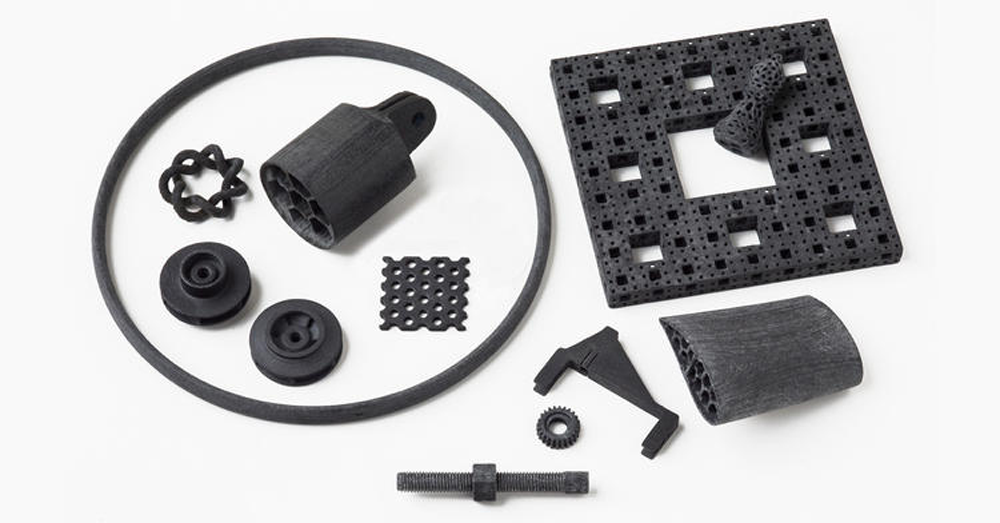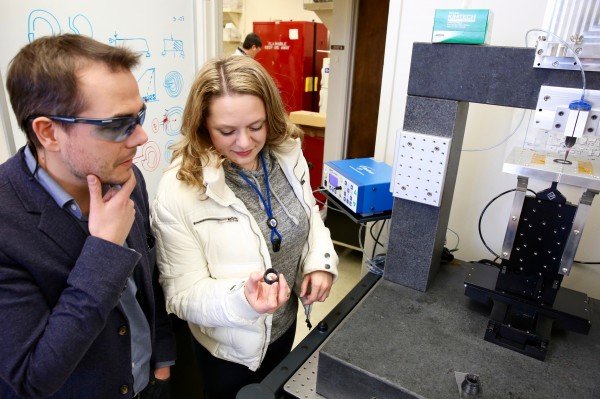Lawrence Livermore National Laboratory (LLNL) has announced they have successfully 3D printed aerospace grade carbon fiber composites. Their research was published in the Scientific Reports journal and the authors believe the process may massively widen the possibilities for the material.
The Californian research institute cite their researchers as becoming “the first to 3D print aerospace-grade carbon fiber composites.” In recent years, LLNL has studied various aspects of additive manufacturing such as their work with metal 3D printing.
3D printing company Markforged has also developed a printer that is capable of 3D printing carbon fiber. The difference between the two seems to be in the process and the ability to create aerospace grade parts. As our detailed look at 3D printed parts in service on aircraft covered, the certification and qualification process for aerospace is lengthy but has been completed by several enterprises including Boeing and GE.
While Markforged uses a carbon fiber filament, the LLNL team has created an ink-like substance. Similarly, other companies like Impossible Objects have developed 3D printers that can create carbon fiber objects. Impossible Objects’ technology is again different as it involves subtractive and additive processes before baking the final printed structure.

Carbon Fiber ink
The team at LLNL call their method Direct Ink Writing (DIW), as we reported in 2015 LLNL researchers were investigating this 3D printing technology for the creation of meta materials. More recently 3D Printing Industry took a look at how Direct-print photopolymerization is advancing.
The LLNL paper also reports the patent of a new curing method which dramatically reduces the curing time to seconds rather than hours. The researchers used a computational model, or code, “to find the optimal fiber length and optimal performance.” This code was fundamental to finding how best to align the carbon fiber models as they extruded.
Carbon fiber has many useful characteristics and is widely used to create strong yet lightweight parts. It has application in a number of industries, including aerospace and the automotive industry. Despite this, it it not the easiest material to manufacture complex parts. Jim Lewicki, the research paper’s lead author and principal investigator, explained the possible impact of such research,
The mantra is ‘if you could make everything out of carbon fiber, you would’ — it’s potentially the ultimate material. It’s been waiting in the wings for years because it’s so difficult to make in complex shapes. But with 3D printing, you could potentially make anything out of carbon fiber.

Traditional process
Lawrence Livermore National Laboratory explain the importance of this new 3D printing technique in light of current methods. Explaining that carbon fiber production involves weaving the fibers together to create flat or cylindrical shapes. This means it is difficult to create complex shapes, while 3D printing is known for its ability to produce bespoke custom parts. 3D printing the carbon fiber composites in this way also means stronger parts can be produced as the carbon fiber weaving can be better aligned.
Currently, the research laboratory will work on optimizing this process and which way best to lay down the carbon fiber inks. However, according to LLNL there has been, “discussions with commercial, aerospace and defense partners to move forward on future development of the technology.” The technique would have great application for these industries as they constantly strive for lighter and stronger materials.
Sign up to 3D Printing Industry’s newsletter for the latest news and follow us on twitter and Facebook.
Featured image shows extruding carbon fiber composite ink which will form part of a rocket nozzle. Photo via Lawrence Livermore National Laboratory.



